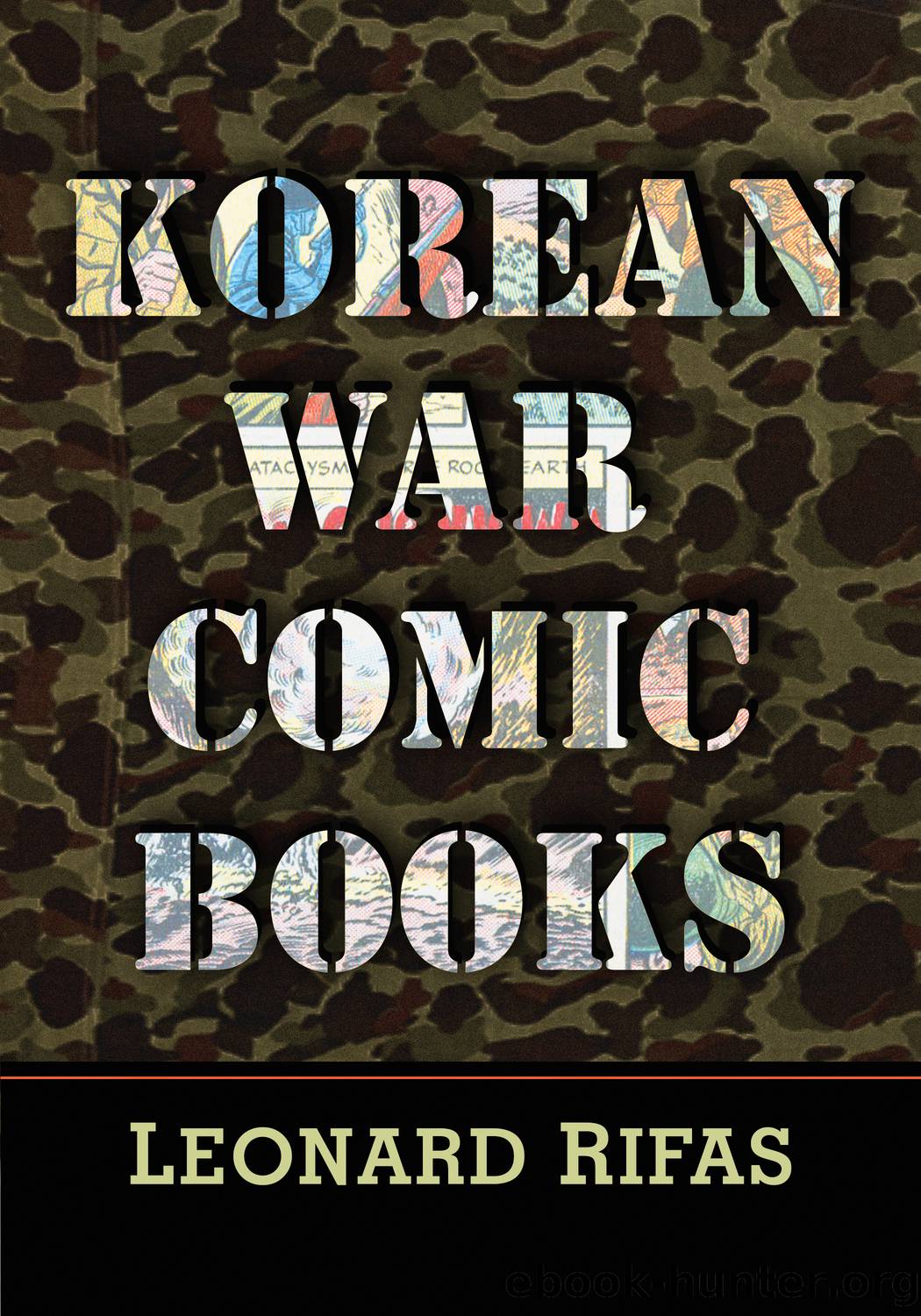Korean War Comic Books by Leonard Rifas

Author:Leonard Rifas
Language: eng
Format: epub
Publisher: McFarland & Company, Inc., Publishers
Published: 2021-05-11T00:00:00+00:00
Some Roots of Exterminationism
Although this chapter begins by describing a propaganda battle over whether the United States was using biological weapons in Korea, the actual communist charges usually placed the germ warfare allegations in the wider context of an American policy of exterminationism. The accusations grouped germ warfare with conventional bombing, napalm, poison gas, and atomic threats.24 The Western response focused tightly on the issue of whether biological warfare was being used as a weapon.
The idea of Americans using germ warfare to massacre Chinese and Koreans has surprisingly deep roots in ÂAnglo-American popular literature. British and American novelists had predicted it many years before their militaries had begun working to make it a possibility. The âyellow perilâ literature, in which these genocidal ideas were developed, eventually provided the foundation for the comic book image of Asians.25
The British author M.P. Shiel wrote an immensely popular novel, incorporating items from contemporary headlines, which was serialized in 1898 and published in book format in 1899 as The Yellow Danger: Or what MIGHT Happen if the Division of the Chinese Empire should Estrange All European Countries.26 In Shielâs novel, the Chinese and Japanese, predicting an eventual race war with the whites, decide to trick the European powers into warring with each other and then invade Europe, planning to overwhelm the survivors with the force of their superior numbers.27 Near the conclusion of the novel, seven million of the Chinese invaders are destroyed when the hero arranges for 150 âChinamenâ to be taken aboard a boat, injected with cholera, and then disembarked two at a time at 75 European ports, to spread that disease among their people. In the happy ending, the Americans take over the administration of the continent of Asia and the English exercise their hegemony over Europe and Africa.28 Although comic books received a lot of criticism for their brutal indifference to human life, clearly that problem existed in more respected types of fiction as well.
The âyellow perilâ literary tradition that Shiel helped to establish seems to have provided a framework through which both sides in the Korean War misinterpreted each other. In Korea, Americans saw the Chinese as vast âhordes,â greatly outnumbering the UN forces, and with the potential to swarm across the Pacific into California.29 Chinese âhuman waveâ attacks seemed to be an American nightmare come true, and such attacks were frequently pictured in the comic books.30 On the other hand, the Koreans and Chinese saw the goal of the U.S. and UN forces to be their own extermination.
The main body of germ warfare charges, however, had to do not with boats (such as those in Shielâs novel or General Samsâ epidemic control ship) but with bombers. Here, once more, a piece of fiction seemed to prefigure the alleged events. Jack Londonâs short story âThe Unparalleled Invasion,â written in 1906 and published in McClureâs Magazine in 1910, described a future war in which Americans defeat the Chinese by using germ warfare. The Americans in that story drop âtubes of fragile
Download
This site does not store any files on its server. We only index and link to content provided by other sites. Please contact the content providers to delete copyright contents if any and email us, we'll remove relevant links or contents immediately.
The Power of Myth by Joseph Campbell & Bill Moyers(1013)
Half Moon Bay by Jonathan Kellerman & Jesse Kellerman(954)
Inseparable by Emma Donoghue(937)
A Social History of the Media by Peter Burke & Peter Burke(936)
The Nets of Modernism: Henry James, Virginia Woolf, James Joyce, and Sigmund Freud by Maud Ellmann(836)
The Spike by Mark Humphries;(766)
The Complete Correspondence 1928-1940 by Theodor W. Adorno & Walter Benjamin(749)
A Theory of Narrative Drawing by Simon Grennan(742)
Culture by Terry Eagleton(724)
Ideology by Eagleton Terry;(696)
Bodies from the Library 3 by Tony Medawar(682)
World Philology by(678)
Farnsworth's Classical English Rhetoric by Ward Farnsworth(674)
Game of Thrones and Philosophy by William Irwin(671)
High Albania by M. Edith Durham(659)
Adam Smith by Jonathan Conlin(648)
A Reader’s Companion to J. D. Salinger’s The Catcher in the Rye by Peter Beidler(646)
Comic Genius: Portraits of Funny People by(616)
Monkey King by Wu Cheng'en(611)
